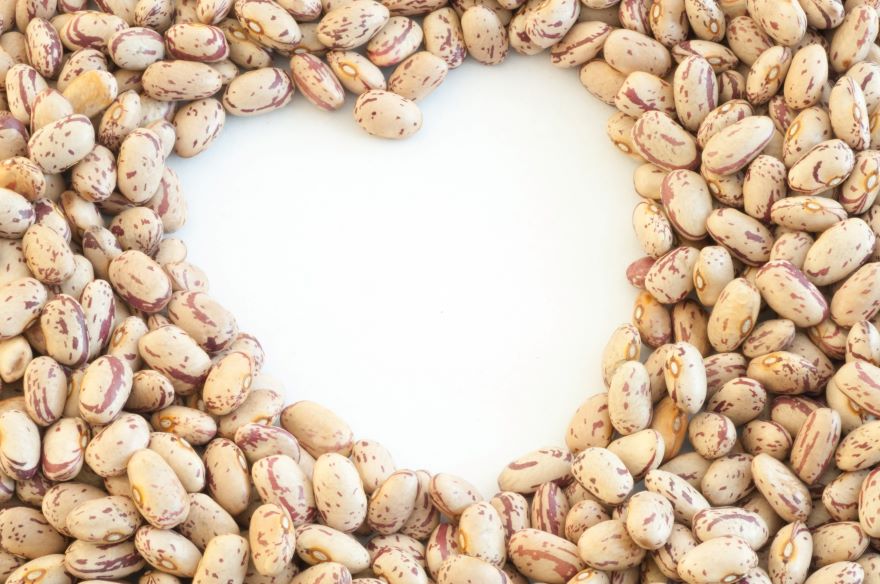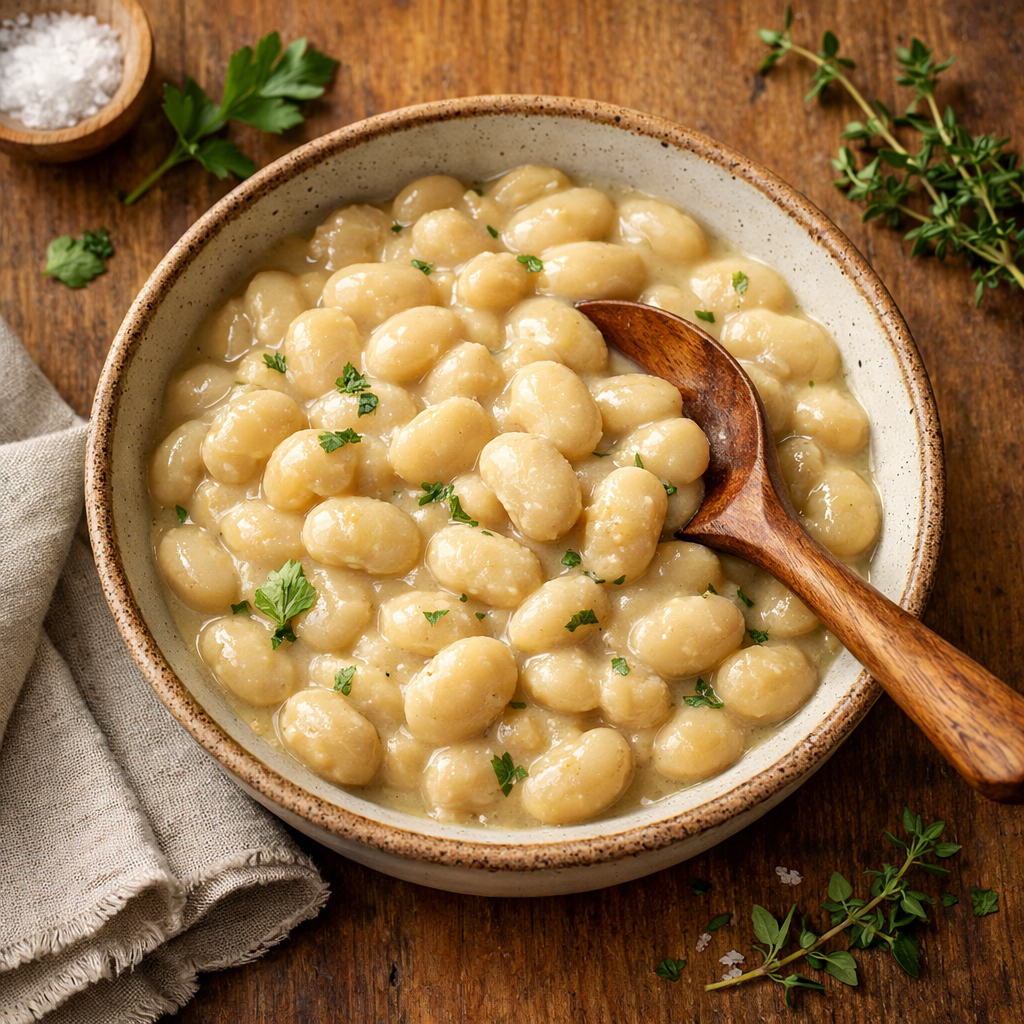Pinto beans, recognized for their creamy texture and versatility, are staples in Mexican and Southwestern American cuisine. When combined with the smoky heat of chipotle—a smoked and dried jalapeño pepper—these beans transform into a dish bursting with robust flavor. Chipotle pinto beans, known for their spicy yet hearty satisfaction, serve as an ideal component in burritos, bowls, or as a stand-alone side dish.

In crafting the perfect chipotle pinto beans, the process begins with properly preparing the beans. If starting with dry beans, soaking and boiling them until tender is crucial for achieving the desired texture. Afterward, the beans absorb the rich, smoky flavor of chipotle, blending with other spices and aromatics. This combination elevates the humble pinto bean to a new level of taste complexity while still offering a good source of protein and fiber, contributing to their nutritional benefits.
Key Takeaways
- Chipotle pinto beans blend the creamy texture of pinto beans with the smoky heat of chipotle.
- The preparation process is key to achieving the perfect texture and flavor profile.
- This dish offers both a rich, satisfying taste and nutritional benefits.
The Basics of Pinto Beans
Pinto beans are not only a staple in many cuisines around the world but are also lauded for their nutritional benefits. They offer a source of protein and fiber, making them an essential part of a balanced diet.
The Nutrition Profile of Pinto Beans
Pinto beans are a powerhouse of nutrition. One cup of cooked pinto beans provides approximately 245 calories, 15 grams of protein, and an impressive 15 grams of fiber. The high fiber content in these beans benefits digestive health and links to various positive health outcomes, including the potential to modulate the gut microbiome. The consumption of pinto beans has been studied for its effects on augmenting MHC II protein, which is essential for immune function, and increasing the expression of antimicrobial peptide genes, both of which can be influential in the context of a normal or western-style diet.
Selecting the Best Pinto Beans
When selecting pinto beans, it’s important to look for beans that are whole and free from cracks or signs of aging. Dry pinto beans should be uniform in color and size, which indicates they are likely to cook evenly. If you’re interested in the potential health benefits associated with these beans, such as their role in diabetes and obesity-related health conditions, it’s essential to choose high-quality beans that will provide the best nutritional value. Studies have delved into the effects of pinto beans on health, highlighting their role as a functional food component capable of influencing the gut and overall health.
Preparing Your Pinto Beans
When I prepare pinto beans, I carefully consider whether to soak them and which cooking method will best suit my needs. My approach ensures both flavor and texture are optimized.
To Soak or Not to Soak
Soaking pinto beans is a debated topic. I’ve found that soaking dried pinto beans overnight can significantly reduce the cook time and may help to make them more digestible. When I decide to soak the beans, I ensure they’re fully submerged in water and let them sit at room temperature for at least 8 hours — a process which can shorten the cooking time by roughly half.
Cooking Methods for Pinto Beans
For the actual cooking, I utilize two main methods: stovetop and slow cooker. On the stovetop, I drain the soaked beans and place them in a large pot, covering them with fresh water. To preserve the beans’ flavor and integrity, I simmer them gently until tender, which typically takes about 1 to 2 hours. During cooking, I periodically check the beans and add water as needed to keep them submerged.
If I choose not to soak the beans, the stovetop cook time increases to about 2 to 3 hours. Regardless of the cook time, I often add a touch of rice bran oil or another neutral oil to enhance their creamy texture, ensuring not to overpower the beans’ earthy flavor.
Introducing Chipotle Flavor

Chipotle flavor is a distinctive taste characterized by its smoky and slightly spicy profile, integral to various culinary creations, especially within Mexican cuisine. I’ll explore how chipotle peppers and adobo sauce contribute to this unique flavor palette.
Working with Chipotle Peppers
I find that chipotle peppers are essentially ripe jalapeño peppers that have been smoked and dried. Their deep, rich smokiness adds complexity to dishes. When I choose chipotle peppers, the goal is to infuse that warm, smoky flavor into the pinto beans. I can finely dice them for a more pronounced flavor or add them whole for a subtle hint.
The Role of Adobo Sauce
Adobo sauce is a savory, slightly tangy sauce that has its roots in Spanish cuisine. I use this powerful condiment to complement the chipotle peppers. It consists of tomatoes, garlic, vinegar, salt, and other spices, enveloping the chipotle peppers in a rich, flavorful paste. When preparing dishes, a spoonful of adobo sauce can heighten the taste with its robust combination of spices and herbs, adding a delightful depth to the pinto beans.
Crafting the Perfect Chipotle Pinto Beans Recipe
In crafting the ideal Chipotle Pinto Beans recipe, it’s crucial to focus on the harmony of spices and the quality of the ingredients. This elevates the dish from good to restaurant-quality.
Balancing Spices and Flavors
To achieve that authentic Chipotle pinto beans flavor, I pay close attention to spice balance. It begins with the earthiness of cumin and the distinct taste of Mexican oregano—not to be confused with its Italian counterpart. The right amount of these, along with sea salt for seasoning, can make a world of difference. Garlic needs to be fresh and finely minced to distribute its potent flavors evenly.
- Cumin: 1 tsp (for an earthy depth)
- Mexican Oregano: 3/4 tsp (for a citrusy kick)
- Salt: to taste (enhances flavors)
- Garlic: 2 cloves, minced (for a pungent profile)
The Importance of Fresh Ingredients
I insist on using only the freshest ingredients for my Chipotle pinto beans recipe. Dried beans trump canned for a better texture and flavor. Moreover, fresh lime juice squeezed just before serving and a high-quality olive oil can elevate the humble bean to something exceptional.
- Olive Oil: 2 tbsp (for sautéing)
- Lime Juice: From 1 lime (for a bright finish)
- Bay Leaf: 1 leaf (for subtle depth)
A generous glug of olive oil heated until shimmering, sautéing minced garlic to just fragrant, and the deglazing effect of fresh lime juice are small but significant steps that lead to that signature taste and creamy, yet firm texture.
Serving Suggestions for Chipotle Pinto Beans
When incorporating Chipotle Pinto Beans into meals, I always consider their rich flavor and versatility. They have the potential to transform a simple dish into something special.
Creating Hearty Main Dishes
In my experience, Chipotle Pinto Beans are an excellent foundation for constructing hearty main dishes. Burrito bowls are a particular favorite of mine and many others, where these beans serve as a substantial base. To assemble, I begin with a layer of cooked rice, add a hearty scoop of the spicy beans, and then pile on additional toppings like grilled chicken, fresh salsa, and a dollop of sour cream. In burrito construction, these beans wrap up neatly with rice, cheese, and vegetables, offering a burst of flavor in every bite. Another option I’ve enjoyed is to incorporate them into tacos, adding texture and depth to the taco meat, whether it’s beef, chicken, or even fish.
Using as a Flavorful Side Dish
As a flavorful side, Chipotle Pinto Beans stand out on any plate. I often serve them alongside grilled meats or vegetables, as the smokey chipotle flavor complements a variety of main courses. For a lighter option, a bean salad can be quickly composed by mixing these robust beans with diced tomatoes, corn, and a tangy lime dressing. They also hold their own as a stand-alone side, simply garnished with fresh cilantro or paired with a slice of cornbread.
Creative Variations to the Classic Chipotle Pinto Beans
Expanding on the classic Chipotle pinto beans can transform them into a versatile base for numerous dishes. My aim is to highlight adaptations that cater to vegetarian and vegan diets as well as methods to incorporate proteins for a more robust meal.
Vegetarian and Vegan Adaptations
In crafting a vegetarian version of Chipotle pinto beans, I opt for olive oil as a substitute for traditional animal-based fats. It’s a simple switch that maintains the rich flavor profile. To elevate these beans for a vegan meal, incorporating ingredients like nutritional yeast can add a cheesy, umami taste without the use of dairy.
- Replace lard or bacon fat with olive oil or coconut oil.
- For a cheesy taste, sprinkle nutritional yeast for a boost of flavor and vitamins.
Notably, most homemade pinto bean variations are naturally vegetarian, making them a perfect candidate for vegan salads or burritos.
Adding Proteins for a Complete Meal
When I’m looking to add more protein to my Chipotle pinto beans, I often think beyond the traditional options. For instance, mixing in quinoa offers a complete protein profile and adds a satisfying texture.
Here’s how I like to bulk up my beans:
- Stir in chunks of grilled chicken or beef for a hearty touch in burritos.
- Add quinoa or tofu chunks to the beans for a plant-based protein boost.
The inclusion of extra proteins transforms the pinto beans from a side dish into the main event, particularly for homemade burrito bowls or as a rich, filling salad base. The flexibility of these beans means they seamlessly fit into a high-protein diet when prepared thoughtfully.
Storing and Keeping the Beans Fresh

To maintain the quality and flavor of chipotle pinto beans, proper storage is essential. Whether you’ve just prepared a homemade batch or have leftovers, the following methods will ensure your beans stay fresh.
Refrigerating Your Leftovers
After enjoying a meal, promptly store your leftover chipotle pinto beans in the refrigerator. Place them in an airtight container to prevent the beans from drying out and absorbing other flavors in the fridge. This method keeps them fresh for approximately three to five days. Always ensure that the beans have cooled to room temperature before refrigerating to prevent condensation and bacterial growth.
Freezing for Future Use
If you have a larger quantity of beans or you’d like to keep them for a longer period, freezing is an effective option. Place your cooled beans in a freezer-safe bag or container, leaving a little space at the top as beans tend to expand when frozen. Squeeze out excess air to avoid freezer burn, which can alter the texture and flavor. Well-packed beans can last in the freezer for up to six months. When you’re ready to enjoy the beans again, thawing them in the refrigerator overnight is the most effective method for maintaining their quality.
Frequently Asked Questions

In this section, I cover some of the most common questions about Chipotle’s pinto beans, providing accurate and straightforward answers to enhance your understanding.
What are the ingredients in Chipotle’s pinto beans?
The ingredients consist of pinto beans, water, onions, chipotle chili, adobo sauce, garlic, and select spices such as cumin and oregano. Olive oil is used instead of rice bran oil, which is the original oil used by Chipotle.
How can I make Chipotle style pinto beans at home?
You can recreate Chipotle’s pinto beans at home by simmering soaked pinto beans with the same blend of spices and ingredients that Chipotle uses. This will yield beans with a similar savory and smoky flavor. Some recipes recommend a quick snapshot of these methods for a speedy preparation.
Are the pinto beans served at Chipotle considered vegetarian?
Yes, the pinto beans at Chipotle are considered vegetarian. They do not contain meat products and are suitable for those following a vegetarian diet.
What is the nutritional content of Chipotle’s pinto beans?
Chipotle’s pinto beans are nutritious, being a rich source of fiber and protein. They are low in fat and contain vitamins and minerals like folate, thiamin, and iron. For more detailed information, Chipotle’s website provides nutritional content for their menu items.
Is there bacon or any meat products in Chipotle’s pinto beans?
No, there isn’t. Chipotle’s pinto beans do not contain bacon or any other meat products. They are seasoned with spices and chipotle chili, without the use of meat, for flavoring.
How spicy are the pinto beans offered at Chipotle?
The spiciness of the pinto beans can be described as mild to moderate. While they are flavored with chipotle chili, which imparts a smoky taste, the beans are not overwhelmingly spicy and can be enjoyed by those who prefer less heat in their food.

*We may earn a commission for purchases made using our links. Please see our disclosure to learn more.



